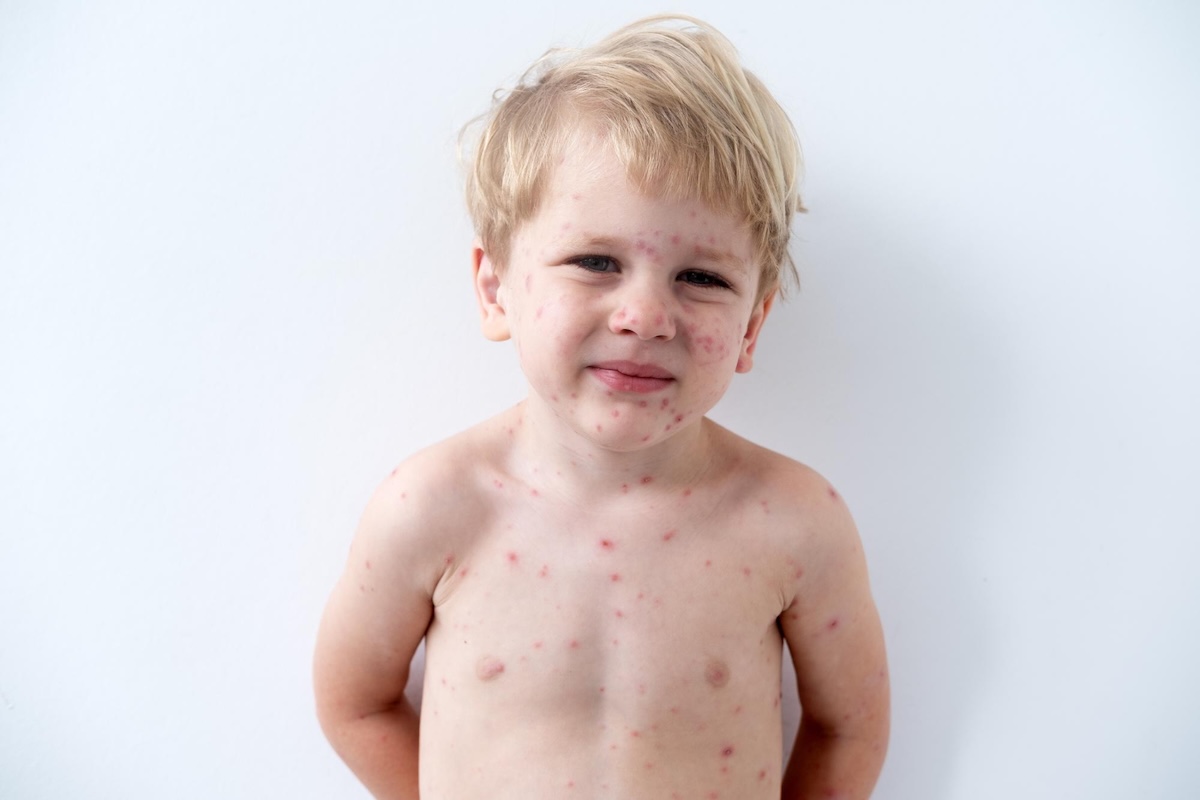Chickenpox is a very contagious infection that causes an itchy skin rash and small, fluid-filled blisters. It’s most common in children, though adults can get it too—especially if they didn’t have it as a child or never got the vaccine. While chickenpox is usually mild, it can sometimes lead to complications, especially in babies, teens, adults, pregnant people, or those with weak immune systems.

Before the chickenpox vaccine became widely available, nearly every child got the illness. These days, thanks to vaccination, the number of chickenpox cases has dropped a lot. But outbreaks can still happen, especially in areas where people aren’t vaccinated.
What Causes Chickenpox And What Types There Are
Chickenpox is caused by the varicella-zoster virus (VZV), which is part of the herpes virus family. It spreads easily from person to person through coughing, sneezing, or touching fluid from the blisters. You can also catch chickenpox by touching things the virus has landed on, like clothing, bedding, or toys.
There is only one type of chickenpox virus, but it can lead to two different illnesses. The first is chickenpox itself, and the second is shingles, which can happen later in life if the virus becomes active again. After someone recovers from chickenpox, the virus stays in the body and can “wake up” years later as shingles, causing pain and a different kind of rash.
People with chickenpox are contagious from one to two days before the rash appears until all the blisters have crusted over. That means the virus can spread before you even know someone is sick.
Signs And Symptoms To Look Out For
Chickenpox symptoms usually begin 10 to 21 days after being exposed to the virus. The early signs can feel a lot like a cold or the flu. Your child may have a fever, feel tired, lose their appetite, or complain of a headache.
A day or two later, the rash begins. It often starts on the chest, back, or face before spreading to the rest of the body. The rash usually goes through three stages:
-
Red bumps that appear in groups and are often very itchy
-
Blisters filled with fluid that form on top of the bumps
-
Scabs that form after the blisters break and dry out
The rash can be very itchy and uncomfortable. New spots may continue to appear for several days, so it’s possible to see all three stages at once. In total, a child with chickenpox may have 250 to 500 blisters.
Other symptoms may include:
-
Mild fever (which may get higher in older children or adults)
-
Tiredness or fussiness
-
Sore throat or runny nose
-
Swollen glands
Some children have such a mild case that the rash is the only sign. Others may feel quite sick for several days. The symptoms usually last about 5 to 10 days.
How Chickenpox Is Diagnosed
Chickenpox is usually diagnosed based on how the rash looks. The combination of itchy spots, blisters, and scabs is usually enough for a doctor to make the diagnosis, especially if the child hasn’t been vaccinated.
If there’s any doubt, especially in adults or people with weak immune systems, the doctor might order a test to check for the virus. This might include a swab from a blister or a blood test to check for chickenpox antibodies.
It’s important to let your doctor know if your child has a weakened immune system, is very young, or is pregnant, since these groups are at higher risk for complications and may need special care.
Treatment Options And What To Expect
Most healthy children don’t need special medication for chickenpox. The focus is on treating symptoms, keeping the child comfortable, and preventing infection of the blisters.
Treatment options may include:
-
Fever control: Use acetaminophen (like Tylenol) to reduce fever and ease discomfort. Avoid aspirin, as it can cause a serious condition called Reye’s syndrome in children with viral infections.
-
Itch relief: Cool baths with baking soda or oatmeal can soothe the skin. Antihistamines like diphenhydramine (Benadryl) may also help reduce itching.
-
Skin care: Keep fingernails short and clean to prevent scratching and infection. Dress your child in loose, soft clothing and gently wash the skin with mild soap and water.
If your child develops a bacterial infection (like redness, swelling, or pus in the sores), your doctor may prescribe an antibiotic.
For people with higher risk of serious illness—like adults, pregnant people, or those with weak immune systems—doctors may prescribe antiviral medication such as acyclovir. These work best when started within 24 hours of the rash appearing and can shorten the illness or make symptoms milder.
Children with chickenpox should stay home and avoid contact with others until all the blisters have scabbed over. This usually takes about 7 to 10 days.
Preventing Chickenpox And Staying Protected
The best way to prevent chickenpox is through the chickenpox vaccine. The vaccine is part of the routine childhood immunization schedule in many countries, including the United States. It’s usually given in two doses—once at 12 to 15 months of age, and again at 4 to 6 years old.
The vaccine is very effective. Most children who get both doses are protected for life. Even if someone who’s been vaccinated still gets chickenpox, it’s usually a much milder version with fewer blisters and little or no fever.
If someone who hasn’t had chickenpox is exposed to the virus, getting the vaccine within 3 to 5 days can sometimes help prevent the illness or make it less severe.
For those who can’t get the vaccine for medical reasons, avoiding contact with infected people and practicing good hygiene—like frequent handwashing—can help lower the risk.

